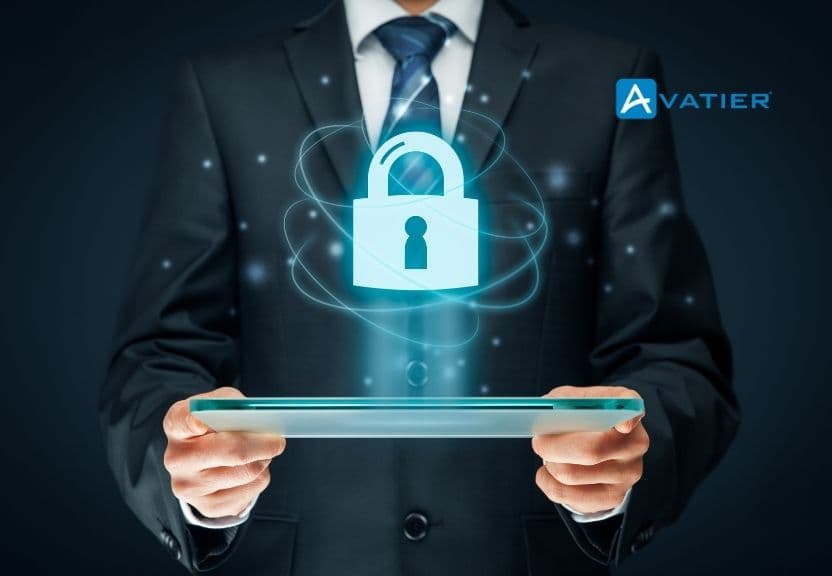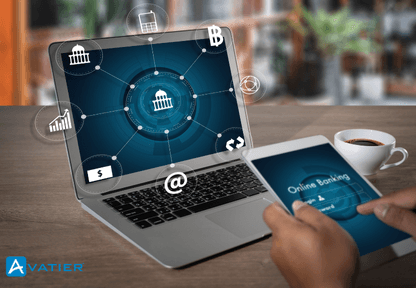October 20, 2025 • Mary Marshall
Security Response Teams: How AI Augments Human Expertise in Modern Cybersecurity
Discover how AI is transforming security response teams during Cybersecurity Awareness Month, enhancing threat detection.

Security response teams face unprecedented challenges. The volume, sophistication, and velocity of cyber threats demand capabilities beyond traditional human-only approaches. As we recognize Cybersecurity Awareness Month, it’s the perfect time to examine how artificial intelligence is revolutionizing security operations centers (SOCs) and incident response teams worldwide.
Security Response Teams: How AI Augments Human Expertise in Modern Cybersecurity
According to IBM’s 2023 Cost of a Data Breach Report, organizations with AI-enabled security response teams reduced breach costs by an average of $1.76 million compared to those without AI capabilities. Moreover, these teams identified and contained breaches 74 days faster than their counterparts relying solely on manual processes. These statistics underscore a critical reality: the future of cybersecurity lies in the strategic partnership between human expertise and artificial intelligence.
The Evolving Threat Landscape Demanding AI Intervention
The cybersecurity challenges facing modern enterprises have grown exponentially in complexity. Consider these realities:
- The average enterprise manages over 180,000 identities with access privileges
- Security teams face alert fatigue with an average of 11,000 daily alerts, of which nearly 40% go uninvestigated
- Sophisticated threat actors now leverage AI to develop more evasive attack vectors
As Nelson Cicchitto, CEO of Avatier, noted during the company’s Cybersecurity Awareness Month initiative, “Cybersecurity is everyone’s responsibility, but it doesn’t have to be everyone’s burden. Our mission is to make securing identities simple, automated, and proactive—so organizations can improve cyber hygiene, reduce risk, and build resilience.”
This sentiment captures the essence of how AI transforms security operations—by automating routine tasks, accelerating threat detection, and empowering human analysts to focus on strategic decision-making.
How AI Enhances Security Response Team Capabilities
1. Accelerated Threat Detection and Analysis
Traditional security information and event management (SIEM) systems generate thousands of alerts daily. Human analysts simply cannot review each one, leading to alert fatigue and potential threats slipping through the cracks.
AI-powered solutions can:
- Analyze millions of events in seconds to identify patterns invisible to human analysts
- Automatically correlate seemingly unrelated events to uncover sophisticated attack campaigns
- Reduce false positives by up to 80%, allowing teams to focus on genuine threats
The result is dramatically improved time-to-detection, with Ponemon Institute research showing AI-enabled teams detect critical threats 60% faster than conventional approaches.
2. Automated Incident Response and Remediation
When a security incident occurs, rapid response is crucial. AI systems can:
- Automatically initiate predefined response playbooks based on threat classification
- Isolate affected systems and temporarily revoke compromised credentials
- Preserve forensic evidence while mitigating immediate damage
- Scale response capabilities during large-scale incidents when human resources would be overwhelmed
Avatier’s Identity Management solutions integrate AI to automate critical identity-related incident response, such as suspending compromised accounts, enforcing step-up authentication for suspicious behavior, and reviewing unusual access patterns—all while maintaining detailed audit trails for post-incident analysis.
3. Continuous Learning and Adaptive Defense
Unlike static security tools, AI systems continuously learn from new data, adapting to evolving threats:
- Machine learning models analyze successful attacks to identify novel threat indicators
- Behavioral analysis establishes baselines for normal user activity, flagging deviations that may indicate compromise
- Natural language processing reviews threat intelligence from multiple sources to anticipate emerging attack vectors
This adaptive capability is particularly valuable for Zero Trust security models, which require continuous verification of all access requests. AI provides the computational power to evaluate multiple risk factors in real-time, enabling security teams to implement contextual access decisions that balance security with productivity.
Real-World Applications of AI in Security Operations
Identity-Focused Threat Detection
Modern attacks frequently target identity infrastructure as the path of least resistance. AI-powered identity threat detection can:
- Identify impossible travel scenarios (login attempts from geographically distant locations in short timeframes)
- Detect credential stuffing attacks by recognizing patterns in authentication attempts
- Flag unusual resource access or privilege escalation that deviates from established behavior patterns
Avatier’s AI Digital Workforce helps enterprises strengthen identity security by continuously verifying identities and enforcing least-privilege access, which aligns perfectly with Zero Trust principles.
Automated Compliance Monitoring and Enforcement
Compliance requirements like GDPR, HIPAA, and PCI-DSS impose strict controls on identity and access management. AI systems can:
- Continuously monitor for compliance violations and automatically remediate issues
- Generate detailed audit trails and compliance reports without manual effort
- Predict potential compliance risks before they materialize
This is particularly valuable for regulated industries like healthcare, where HIPAA compliance solutions must be rigorously maintained. AI-enabled compliance monitoring ensures continuous adherence rather than point-in-time assessment.
Threat Hunting and Proactive Security
Instead of merely reacting to alerts, modern security teams use AI to proactively hunt for threats:
- AI identifies subtle indicators of compromise that haven’t triggered conventional alerts
- Predictive analytics forecast potential attack vectors based on emerging threat intelligence
- Security posture scoring identifies vulnerable assets before attackers can exploit them
This proactive approach helps organizations stay ahead of threats rather than perpetually playing catch-up.
Balancing Human Expertise with AI Capabilities
Despite these impressive AI capabilities, human expertise remains essential. The most effective security response teams operate as human-AI partnerships, with each component contributing unique strengths:
AI Strengths:
- Processing vast amounts of data at machine speed
- Identifying subtle patterns across disparate data sources
- Executing predefined response protocols with perfect consistency
- Operating continuously without fatigue
Human Strengths:
- Strategic thinking and decision-making in ambiguous situations
- Creative problem-solving for novel threats
- Contextual understanding of business priorities and risk tolerance
- Emotional intelligence and stakeholder communication
As Dr. Sam Wertheim, CISO of Avatier, emphasized during Cybersecurity Awareness Month: “Our mission is to make securing identities simple, automated, and proactive—so organizations can improve cyber hygiene, reduce risk, and build resilience during Cybersecurity Awareness Month and beyond.”
Implementing AI-Enhanced Security Response: Best Practices
Organizations looking to augment their security response teams with AI should consider these implementation best practices:
1. Start with Clear Use Cases
Begin by identifying specific security challenges where AI can deliver immediate value:
- Alert triage and prioritization
- User behavior analytics
- Automated response for common incidents
- Identity threat detection and response
Focusing on clear use cases ensures measurable outcomes and builds organizational confidence in AI technologies.
2. Integrate with Existing Security Infrastructure
AI solutions should enhance rather than replace existing security investments:
- Ensure AI tools integrate with current SIEM and SOAR platforms
- Connect AI capabilities with identity governance and access management systems
- Maintain consistent security policies across both AI and conventional tools
Avatier’s Identity Management Architecture is designed for seamless integration with existing security infrastructure, enhancing rather than replacing current investments.
3. Develop Human-AI Collaboration Models
Create operational models that leverage the strengths of both human analysts and AI systems:
- Design clear escalation paths from AI to human analysts
- Create feedback loops where human decisions improve AI accuracy
- Develop workflows that keep humans informed while automating routine tasks
- Train analysts to effectively interpret AI-generated insights
4. Address Ethical and Privacy Considerations
AI deployments must respect ethical boundaries and privacy regulations:
- Implement strong data governance for information used in AI training
- Ensure AI decisions are explainable and auditable
- Maintain appropriate human oversight of automated actions
- Consider potential bias in training data and monitoring outcomes
The Future of AI-Enhanced Security Response
As we look beyond Cybersecurity Awareness Month toward the future of security operations, several emerging trends will reshape how AI augments human expertise:
Convergence of Identity and Security
The traditional boundaries between identity management and security operations are dissolving. Future AI systems will provide unified visibility across identity infrastructure, endpoint security, network defenses, and cloud environments. This convergence enables truly comprehensive threat detection and response centered on protecting digital identities.
AI vs. AI: The Emerging Battleground
As attackers adopt AI to enhance their capabilities, defensive AI must evolve to counter these threats. We’re entering an era where machine learning systems will battle each other—attackers using AI to find vulnerabilities and evade detection, while defenders deploy counter-AI to identify these sophisticated attacks. Security teams must prepare for this new paradigm by understanding the capabilities and limitations of adversarial machine learning.
Human Augmentation Rather Than Replacement
The most effective security teams of the future will be “centaur teams”—combining human insight with AI processing power. Rather than replacing analysts, AI will elevate their capabilities through augmented intelligence, allowing them to operate at machine scale while applying uniquely human judgment to complex security challenges.
Conclusion: The Path Forward
As we recognize Cybersecurity Awareness Month, it’s clear that AI has transformed from a futuristic concept to an essential component of modern security operations. Organizations that effectively combine human expertise with AI capabilities gain a decisive advantage in defending against increasingly sophisticated threats.
The statistics speak for themselves: faster detection, more efficient response, reduced costs, and improved security outcomes. Yet the most successful implementations recognize that AI is not a replacement for human expertise but rather an amplifier of human capabilities.
By embracing this human-AI partnership model and implementing the best practices outlined above, security teams can build more resilient defense capabilities that scale with the evolving threat landscape. In the ongoing battle against cyber threats, the most powerful weapon is neither human nor artificial intelligence alone—it’s the strategic combination of both.
For more insights on enhancing your security posture during Cybersecurity Awareness Month, visit Avatier’s Cybersecurity Awareness resources.









